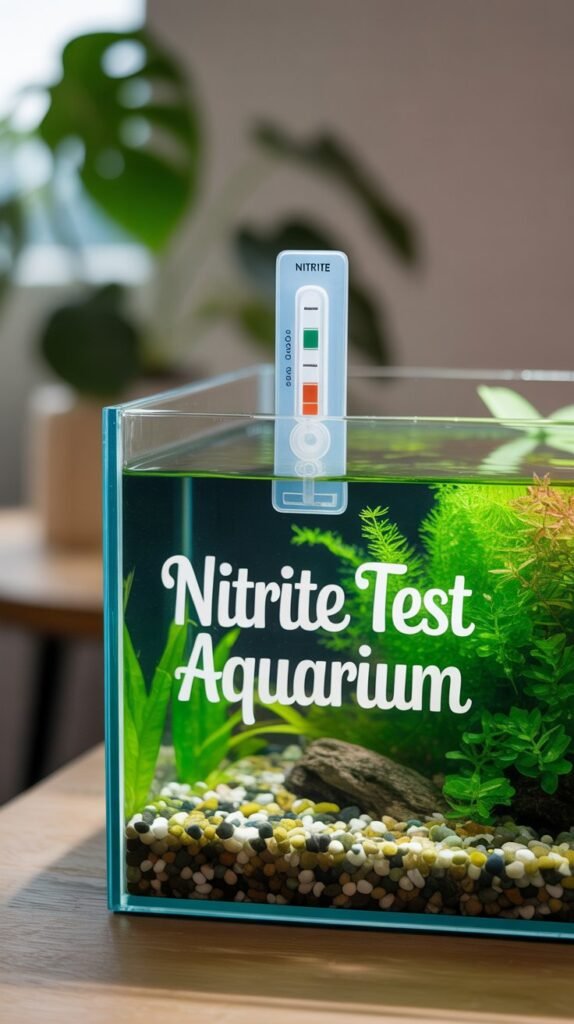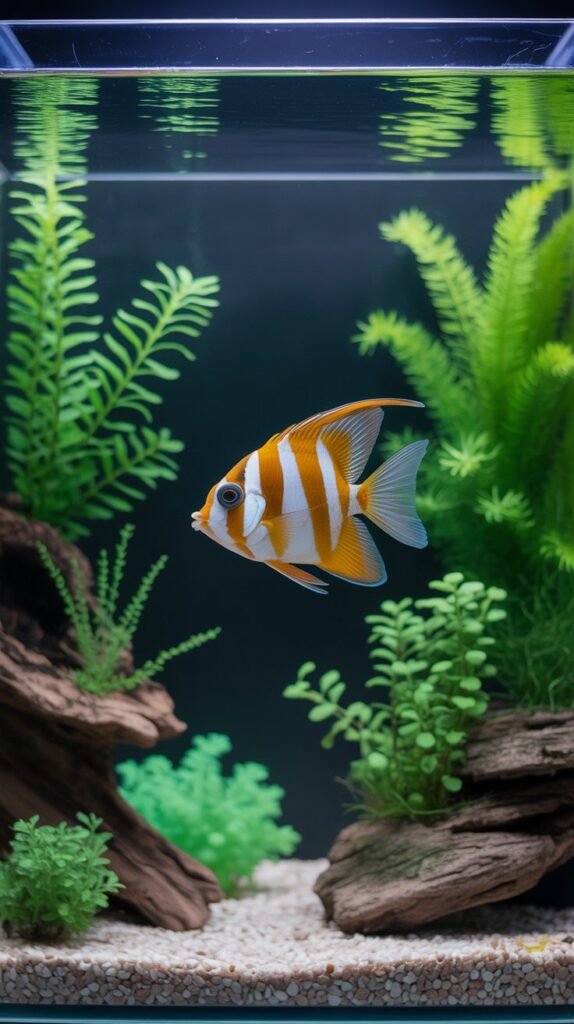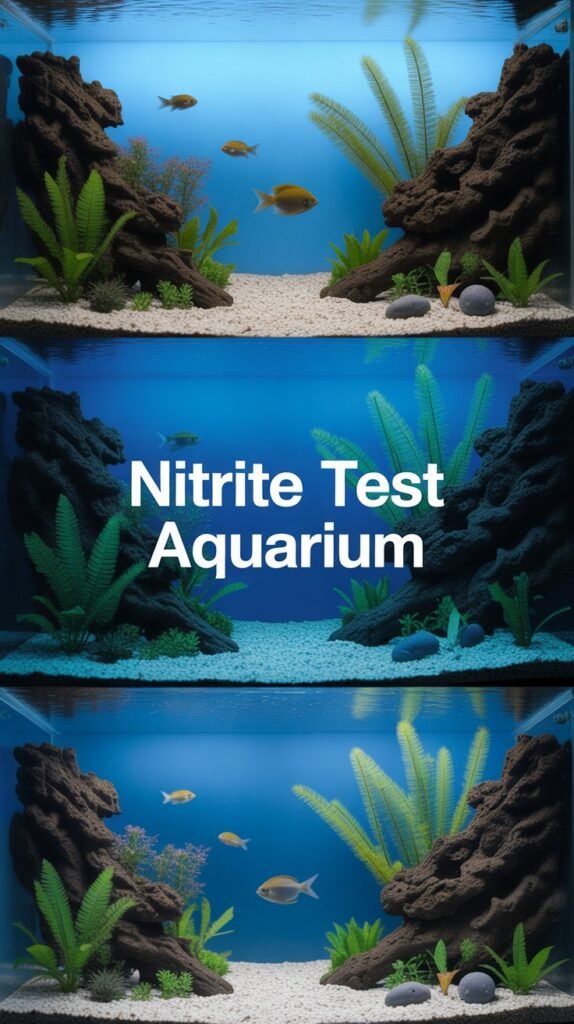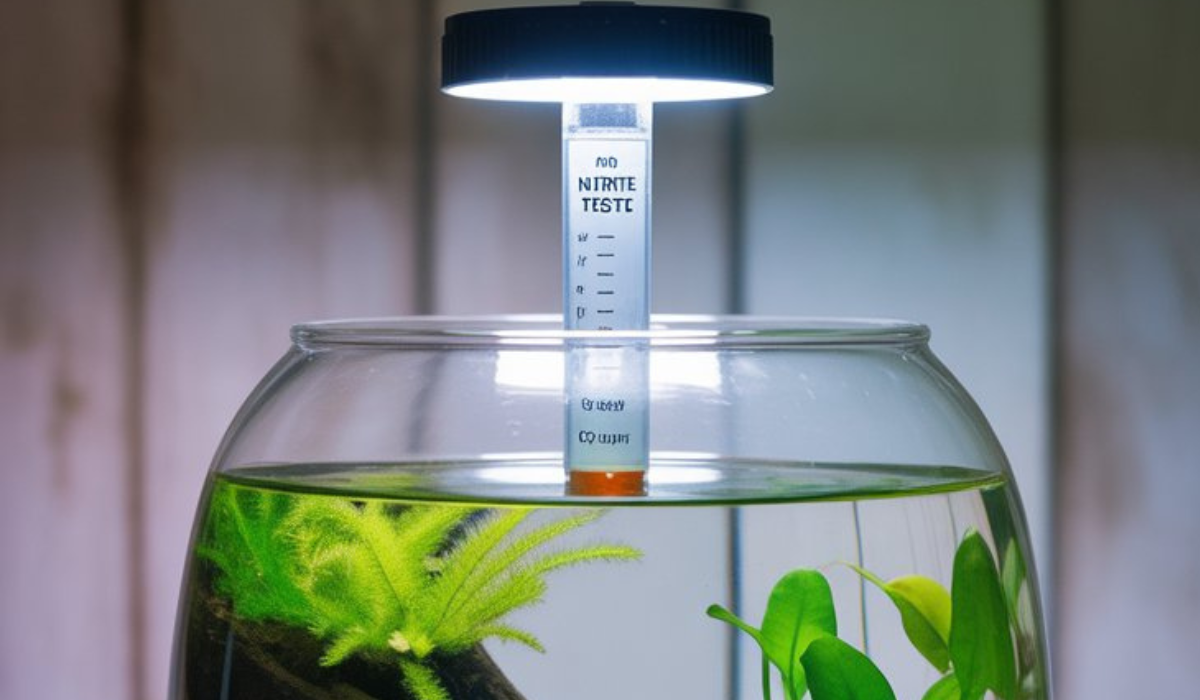Keeping an aquarium healthy goes far beyond feeding fish and cleaning the tank. Water chemistry plays a vital role in the well-being of your aquatic life, and one of the most critical parameters to monitor is nitrite (NO₂⁻). Even small amounts of nitrite can harm or kill fish, making the nitrite test aquarium an essential tool for every fish keeper.
In this detailed guide, we’ll explain what nitrite is, why testing for it is so important, how to perform a nitrite test in your aquarium, how to interpret the results, and what steps to take if your nitrite levels are too high. Whether you’re new to fishkeeping or an experienced aquarist, understanding nitrite testing can make all the difference between a thriving tank and a struggling one.
What Is Nitrite in an Aquarium?
Nitrite is a toxic compound (NO₂⁻) that forms during the nitrogen cycle, a biological process that converts fish waste, uneaten food, and decaying plants into less harmful substances. This cycle has three key stages:
- Ammonia (NH₃) is produced from fish waste and decomposing matter.
- Nitrosomonas bacteria convert ammonia into nitrite (NO₂⁻).
- Nitrobacter bacteria further convert nitrite into nitrate (NO₃⁻), which is much less harmful and can be removed through water changes or absorbed by plants.
The problem arises when nitrite builds up faster than bacteria can process it. Elevated nitrite levels are dangerous to fish and can lead to stress, illness, and even death.
Why Is the Nitrite Test Important for Aquariums?

Performing a nitrite test aquarium regularly is crucial because nitrite is invisible and odorless — you won’t know it’s there until it’s too late. Even trace amounts can interfere with oxygen transport in fish blood, leading to a condition called brown blood disease (methemoglobinemia).
Testing ensures that your biological filtration system is working correctly and that your tank is safe for all inhabitants. Regular nitrite tests can help you:
- Detect early signs of water quality issues
- Prevent fish stress and mortality
- Monitor the progress of new tank cycling
- Confirm the effectiveness of your filtration system
- Maintain a stable nitrogen cycle
By catching nitrite spikes early, you can take corrective action before your fish suffer.
When Should You Perform a Nitrite Test?
You should use a nitrite test kit under several circumstances:
- During the initial aquarium cycling process: Testing daily or every other day helps track the nitrogen cycle’s progress.
- After adding new fish: More fish means more waste, which can increase nitrite levels.
- Following filter maintenance or cleaning: Cleaning can disrupt beneficial bacteria populations.
- After medication or antibiotic use: Some medications harm nitrifying bacteria, leading to spikes.
- If fish show unusual behavior: Gasping for air, clamped fins, or lethargy can indicate nitrite poisoning.
- As part of routine maintenance: Weekly or bi-weekly testing ensures stable long-term water quality.
Consistent testing helps you understand your aquarium’s biological balance and prevents sudden toxic outbreaks.
Types of Nitrite Test Kits for Aquariums
Several types of nitrite test kits are available for home aquariums, each with its advantages and limitations. Understanding these options helps you choose the most suitable one for your tank.
1. Liquid Test Kits
Liquid kits are the most common and accurate type for aquarium use. They typically include a reagent and a color comparison chart. You add drops of reagent to a water sample and compare the resulting color to the chart. Brands like API and Tetra are highly trusted.
Pros: Accurate, affordable, and widely available.
Cons: Requires careful measurement and interpretation.
2. Test Strips
Test strips are convenient and easy to use. You simply dip the strip into the aquarium water and read the color change within seconds.
Pros: Quick, user-friendly, ideal for beginners.
Cons: Less precise than liquid kits, may be affected by humidity or expiration.
3. Digital Testers
Digital nitrite testers use sensors to measure nitrite concentration electronically. They are perfect for professionals or serious hobbyists.
Pros: Very accurate and provides instant readings.
Cons: More expensive and requires calibration or maintenance.
4. Multi-Parameter Kits
Some kits test multiple parameters at once, including ammonia, nitrite, nitrate, and pH. They are useful for overall water monitoring.
Pros: Comprehensive and cost-effective for full water testing.
Cons: May require more time and careful comparison for accurate results.
How to Perform a Nitrite Test in Your Aquarium

Performing a nitrite test is simple, but accuracy depends on following the instructions carefully. Here’s a general step-by-step guide for liquid and strip tests.
For Liquid Test Kits:
- Collect the water sample using the provided test tube or a clean glass.
- Add the recommended number of drops of the nitrite reagent.
- Cap and shake the test tube gently to mix the reagent thoroughly.
- Wait for the reaction time (usually 5 minutes).
- Compare the water color to the provided color chart.
- Record the result to track your aquarium’s nitrite trend.
For Test Strips:
- Dip the strip into the aquarium water for 1–2 seconds.
- Remove and hold horizontally for the recommended time.
- Compare the color pad to the chart provided.
- Note the result for future comparison.
Always test at the same time of day and avoid contaminating your samples with tank debris, soap, or residue.
Understanding Nitrite Test Results
Interpreting your test result is key to maintaining fish health. Most test kits use color-coded scales, typically measured in parts per million (ppm) or milligrams per liter (mg/L).
- 0 ppm (Safe): Ideal condition. The biological filter is fully processing ammonia into nitrate.
- 0.25 ppm (Caution): Indicates the nitrogen cycle is incomplete or mildly disrupted.
- 0.5–1.0 ppm (Danger): Harmful to most fish. Immediate partial water change recommended.
- 2.0 ppm or higher (Toxic): Severe nitrite poisoning risk. Emergency action required.
For most freshwater and marine aquariums, nitrite levels should always remain at 0 ppm. Any detectable nitrite is a sign that something is wrong with your filtration or bacterial balance.
Symptoms of High Nitrite Levels in Fish
Fish exposed to high nitrite levels show visible signs of stress and discomfort. Recognizing these symptoms early can prevent fatalities.
Common symptoms include:
- Rapid or labored breathing
- Gasping near the surface
- Lethargy or reduced activity
- Clamped fins
- Loss of appetite
- Pale or brownish gills (due to brown blood disease)
- Hanging near filter outflows or aeration points
In severe cases, fish may die suddenly without visible signs. Immediate testing and treatment are essential if you observe these symptoms.
How to Lower Nitrite Levels in Your Aquarium
If your nitrite test shows elevated readings, act quickly. Here are the most effective methods to reduce nitrite concentration in your aquarium:
1. Perform Partial Water Changes
Replace 25–50% of the tank water with clean, dechlorinated water. This instantly dilutes nitrite levels and provides temporary relief for fish.
2. Add Aquarium Salt (Sodium Chloride)
Adding non-iodized aquarium salt helps protect fish from nitrite toxicity. The chloride ions in salt block nitrite absorption through the gills. Use 1 tablespoon per 10 gallons, but research your fish species first — some don’t tolerate salt well.
3. Increase Aeration
High nitrite levels reduce oxygen transport in fish blood. Extra aeration from air stones or filters improves oxygen availability.
4. Stop Overfeeding
Uneaten food decomposes and increases waste. Feed small portions your fish can finish in 2–3 minutes.
5. Check Your Filter
Ensure your filter media is not clogged and that beneficial bacteria colonies are healthy. Avoid washing biological media in tap water, which can kill bacteria.
6. Use Bacterial Supplements
Add nitrifying bacteria products like Seachem Stability, Tetra SafeStart, or API Quick Start to boost the nitrogen cycle.
7. Avoid Adding New Fish
Until nitrite levels are stable at 0 ppm, avoid increasing the tank’s bioload.
How to Prevent Nitrite Spikes

Prevention is always better than cure. Consistent aquarium maintenance and proper cycling are key to avoiding nitrite problems altogether.
Here are proven prevention tips:
- Cycle your aquarium fully before adding fish.
- Test nitrite weekly as part of routine maintenance.
- Avoid overstocking your tank; follow the one-inch-per-gallon rule for beginners.
- Feed sparingly to minimize waste buildup.
- Clean the substrate regularly to remove uneaten food and detritus.
- Maintain your filters properly and never replace all media at once.
- Add live plants to absorb nitrate and stabilize water chemistry.
By following these steps, you create a self-sustaining biological system that naturally regulates nitrite.
The Role of the Nitrogen Cycle
Understanding the nitrogen cycle helps you see why nitrite testing is so important. When you first set up an aquarium, beneficial bacteria take time to establish. During this cycling process, ammonia and nitrite levels fluctuate before stabilizing.
A properly cycled tank has enough bacteria to convert ammonia → nitrite → nitrate efficiently. Regular nitrite testing during this phase helps you monitor progress and know when it’s safe to add fish. If you skip this step, your fish could suffer from new tank syndrome, where toxic compounds spike unpredictably.
Best Nitrite Test Kits on the Market
Several reliable brands produce accurate nitrite testing kits for aquariums. Here are some top recommendations:
- API Nitrite Test Kit – Highly accurate and cost-effective liquid test suitable for both freshwater and saltwater tanks.
- Tetra EasyStrips 6-in-1 – Ideal for quick checks, testing nitrite, nitrate, ammonia, and more.
- Salifert Nitrite Test Kit – Great choice for marine aquariums with precise readings.
- Hanna Instruments Marine Nitrite Checker – Digital meter providing professional-grade accuracy.
Choosing the right kit depends on your experience level, tank type, and desired accuracy.
Conclusion
Nitrite is one of the most dangerous yet preventable toxins in aquariums. With regular nitrite testing, proper filtration, and responsible feeding, you can keep your aquatic environment safe and healthy. A good nitrite test aquarium kit is an essential investment that helps you detect early warning signs, prevent fish stress, and maintain crystal-clear, balanced water.
By understanding the nitrogen cycle and monitoring your water chemistry consistently, you’ll enjoy a thriving aquarium where your fish can live long, stress-free lives.
FAQs About Nitrite Test Aquarium
1. How often should I test nitrite levels in my aquarium?
During the cycling phase, test daily or every other day. Once established, weekly testing is sufficient for maintenance.
2. What is the ideal nitrite level for aquariums?
The ideal nitrite level is 0 ppm. Any detectable amount indicates an imbalance in the nitrogen cycle.
3. Can high nitrite levels kill fish quickly?
Yes. Elevated nitrite can cause brown blood disease, leading to suffocation even when oxygen levels are normal.
4. What should I do if my nitrite level is above 1 ppm?
Perform an immediate partial water change, add salt, and enhance filtration or bacterial activity.
5. Do live plants help reduce nitrite?
Indirectly, yes. Plants absorb nitrate, the end product of nitrite conversion, keeping the nitrogen cycle balanced.
6. Can I test nitrite with the same kit for both freshwater and saltwater?
Yes, most high-quality nitrite test kits work for both freshwater and marine aquariums. Always check the manufacturer’s label.
7. How long does it take for nitrite levels to stabilize in a new tank?
Typically, 4–6 weeks for a full nitrogen cycle to complete, depending on temperature, filtration, and bacterial growth.
8. What causes nitrite spikes in established tanks?
Overfeeding, overstocking, cleaning filters too thoroughly, or using antibiotics can disrupt the bacterial balance.
9. Do water conditioners remove nitrite?
Some conditioners, like Seachem Prime, can detoxify nitrite temporarily, but they don’t remove it completely.
10. Can fish recover from nitrite poisoning?
Yes, if caught early. With clean water, aeration, and reduced nitrite levels, most fish can recover within days.

